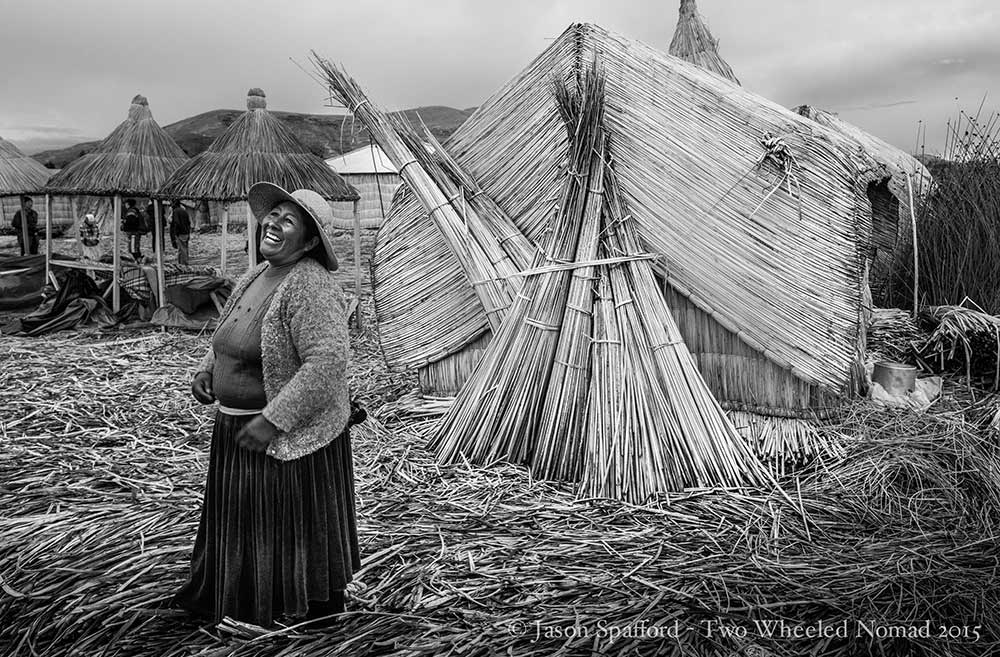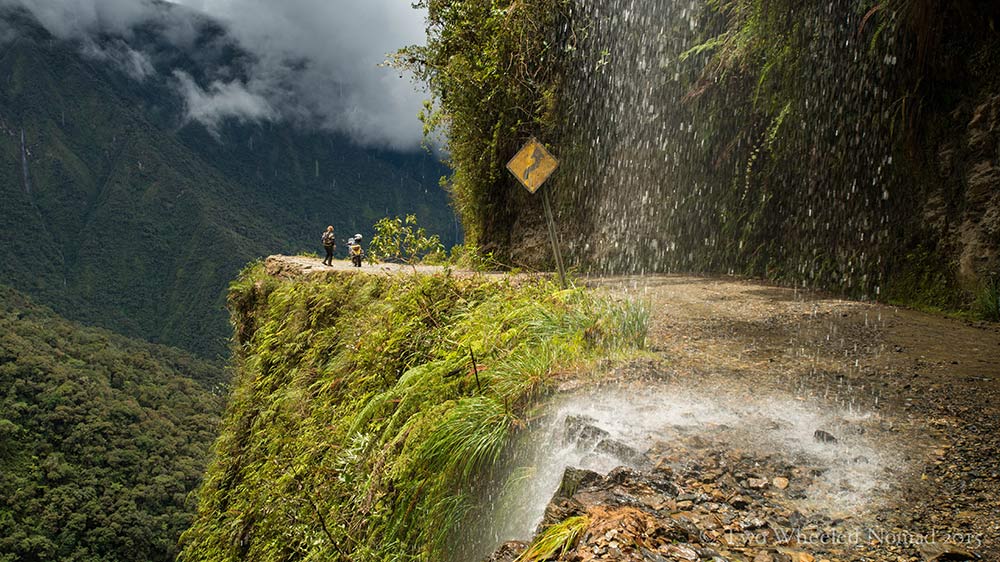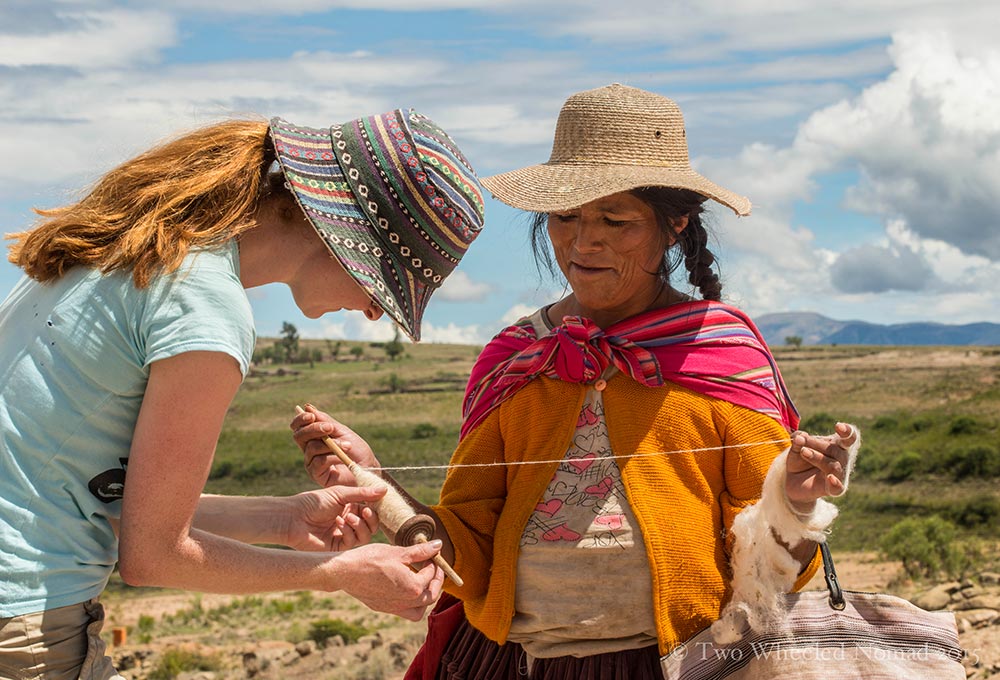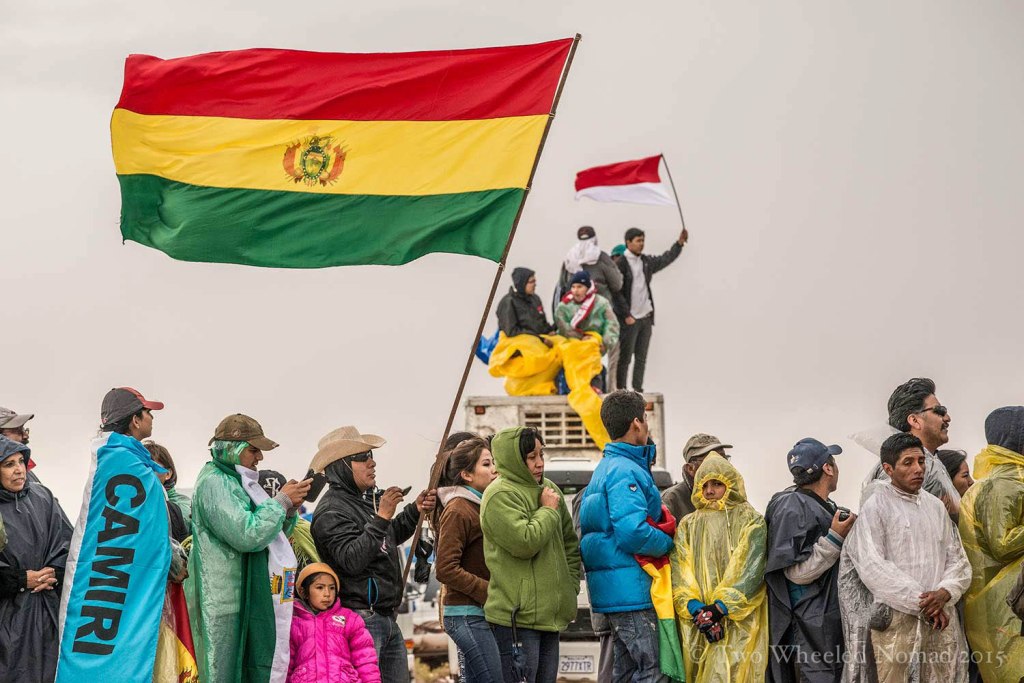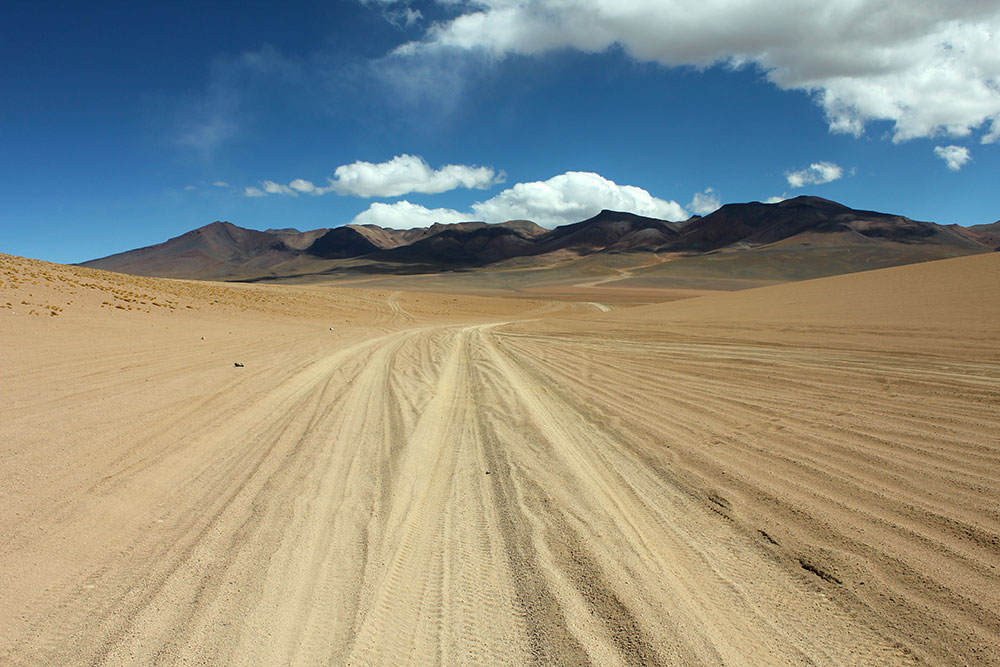Leaving La Paz wasn’t the cruisey ride I’d pictured. To begin with, we had some heartfelt farewells and heartwarming moto-hugs to dispense. Oscar reluctantly let us go and sent us on our merry way into the bedlam of downtown La Paz. Getting out of the city meant getting well and truly stuck in it first. Busy with barminess, I hovered over and hit my horn like I was signaling Morse code: ‘Get-me-out-of-here!’ A veritable racket and tantamount to ten times the danger of Bolivia’s disreputable Death Road. Sandwiched between Toyota Town-Aces and Hi-Aces, my panniers scraped and scratched like nobody’s business. A fit of fury stuck halfway down my throat, like a sneeze that refused to come. Mind unraveling to become somewhat discombobulated, I gritted my teeth and remained undeterred, at least outwardly.
Bolivia
25 Jan 2015 – The Road of Death on motorcycle
An 11,000-foot descent, sheer drops and 200 plus deaths a year: welcome to Bolivia’s Road of Death, the terrifying route tourists love to two wheel down. Its official name is Camino a las Yungas but it’s best known as La Carretera de la Muerte, the Road of Death. It’s not just a name either: the gorgeously lush, winding 64-kilometre route that links La Paz with the town of Coroico was and is still considered one of the deadliest roads in the world. Just one of many in Bolivia.
13-24 Jan 2015 – Leaving footprints in Torotoro & a present from La Paz
With the misadventure of missing the Dakar from Salar de Uyuni having passed, we wished the moto Olympians well for the remainder of the race (from afar), and scampered back to Sucre with a tail between our legs. Refuelled and rested in Bolivia’s constitutionally recognised capital, we scurried the 200 odd miles over rutas 5, 23 and 7 leading us into the urban sprawl that is Cochambamba. The streets were saturated with photocopier shops, crammed in between kiosks bursting with processed junk, chips and salsa, banks of candy and great walls of electrified soda.
10-12 Jan 2015 – The Dakar two-wheeled warriors! (2 of 2)
Background (Courtesy of the official Dakar website)
The Dakar Rally Raid: The adventure began back in 1977, when Thierry Sabine got lost on his motorbike in the Libyan desert during the Abidjan-Nice Rally. Saved from the sands in extremis, he returned to France still in thrall to this landscape and promising himself he would share his fascination with as many people as possible. He proceeded to come up with a route starting in Europe, continuing to Algiers and crossing Agadez before eventually finishing at Dakar. The founder coined a motto for his inspiration: “A challenge for those who go. A dream for those who stay behind.” Courtesy of his great conviction and that modicum of madness peculiar to all great ideas, the plan quickly became a reality. Since then, the Paris-Dakar, a unique event sparked by the spirit of adventure, open to all riders and carrying a message of friendship between all men (and women), has never failed to challenge, surprise and excite. Over the course of almost thirty years, it has generated innumerable sporting and human stories.
1-9 Jan 2015 – Pit of Potosi, sugar in Sucre & a lively band of Bolivians (1 of 2 Dakar)
“Break the boundaries of a limited mind and body. Experience bliss throughout yourself and around yourself. Find yourself in the Ultimate.” I’m beginning to identify with Swami Purna’s reflection.
New Year in Salta cost us several arms and legs. Jason’s fuel pump had given up the ghost, not favourable on our budget but one of those hidden costs we’d simply have to take on the chin and write off. Ruta 51 from Salta kick-started the New Year at the crack of sparrows with a 100-mile ride along Rosario river, fun sections of dirt and asphalt to a rest-stop in San Antonio de los Cobres. We were headed to La Quiaca via an old section of the ruta 40 where the rugged ripio eventually meets the smooth run of ruta 9. An overnight stay in the dusty desert town and two melt-in-your-mouth meals consumed at San Antonio’s Quinoa Real cafe later, gave me the energy to jump straight back on Pearl and tackle the 58 miles of thankless tract, which grew mostly rocks, hand blisters and busted hopes.
21-30 Sept 2014 – Lucid thoughts when lightning strikes
Once passing for human again post our sliver in Bolivia, we casually made our way out of San Pedro de Atacama. Upon leaving, the three of us bumped into some bikers from Santiago ‘two up’ on two bikes. Briefly acquainted, their proceeding word of cautionary advice was, “Be very, very careful in Argentina, it is dangerous.” Eh?! Sorry, it’s what now? Surely it had to be about thee safest country in South America – of which we’d experienced its length and breadth around a dozen times. I was fast running out of passport pages because of our unremitting infatuation with the country. I shouldn’t have but out of earshot, I chuckled to myself on and off for about half an hour afterwards. What exactly should we be so afraid of, I honestly wondered as we rode into the familiarity of Argentina. Vicious vicuna?
12-20 Sept 2014 – Bolivia’s brutal beauty!
Plan A: To vacate Uyuni in Bolivia via 237 miles on routes 5, 701, skirting around lagunas Pasto Grande, Capina and Colorada, through the Eduardo Avaroa National Reserve of Andean Fauna, by-passing Laguna Verde to eventually cross the border into northern Chile’s San Pedro de Atacama. Why the need to re-enter Chile for the nth time? It seemed silly to venture any further north when we’d made November plans in the southern most aspect of South America again.
Appreciating that only around 10 per cent of roads are paved in Bolivia, acknowledging there is only one road rule in the country: There are no road rules as well as knowing little and less about the true road conditions, we jumped straight onto the online forums and ascertained the consensus of our desired route to be a long six-day road that was “slow-going but not technical”. I was on board with that – vamoose, lets go!
